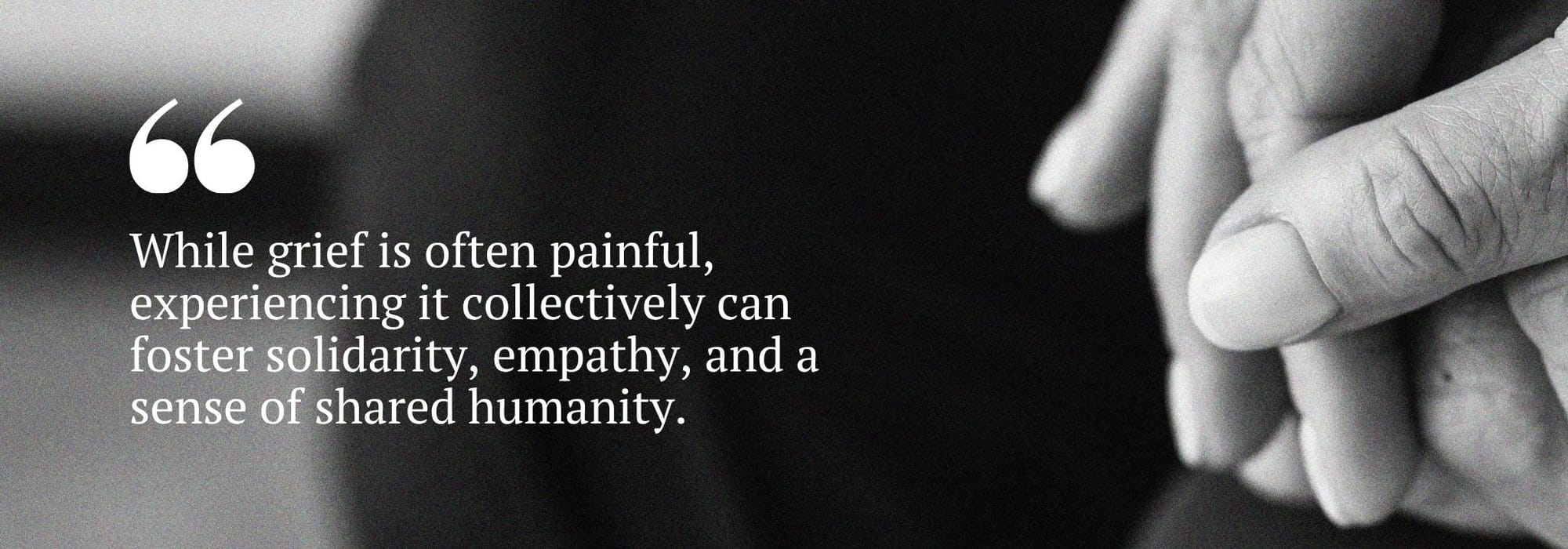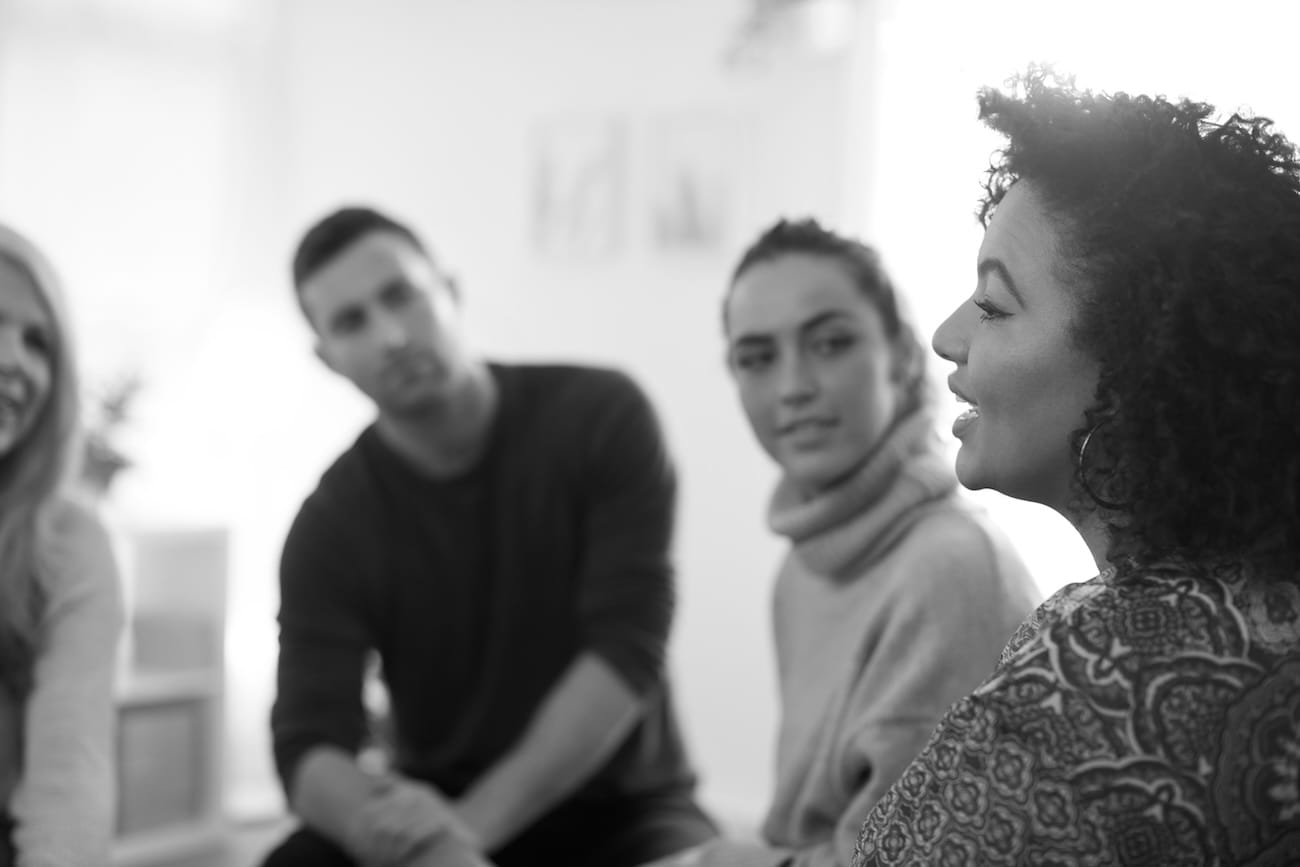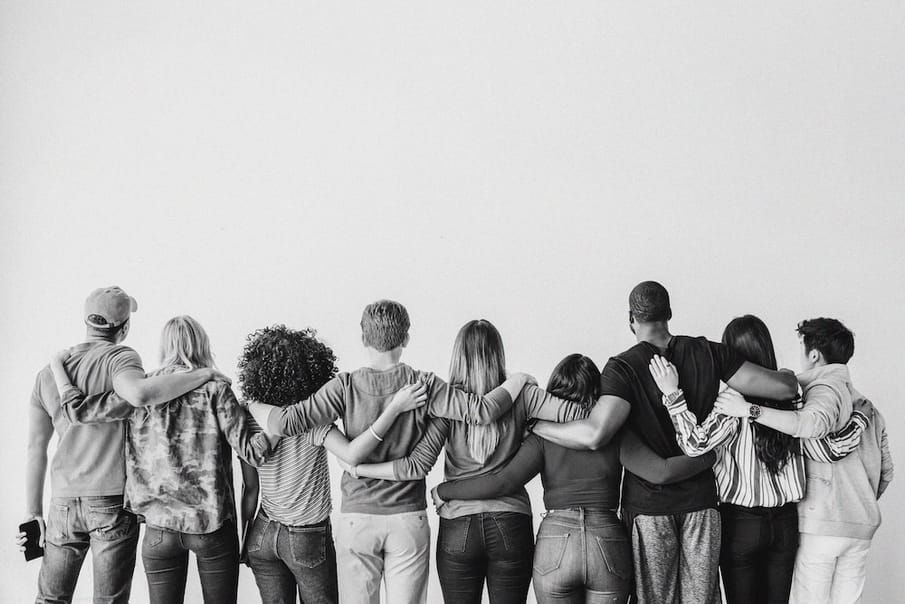We sometimes think of grief as a personal experience, but a sense of loss can also occur on a larger scale, affecting entire communities
Grief touches everyone at some point in their life, whether through the personal loss of a loved one, a relationship, a job, or even a sense of self. But one type of mourning that is sometimes overlooked is the shared experience of loss following tragic events that affect many people simultaneously. This is known as collective grief.
Despite grief being universal, the intricate nature and depth of grieving, as well as the pressures and misunderstandings surrounding the process, may sometimes live beyond the reach of language. Perhaps because grief, in any form, feels tricky to translate at times, and isn’t something we always find easy to discuss in today’s society.
While I don’t pretend to hold all the solutions here, together we can, at the very least, create an opening for feelings of shared loss to be recognised, and find ways to cope when things seem too big to carry alone.
What is collective grief, exactly?
Collective grief happens when a group of people experiences a shared loss or trauma. An example is when a catastrophe, such as death, significant change, war, natural disasters, or the loss of a high-profile individual, affects a group of people, including a community or nation.
“Collective grief is the shared emotional response to a loss that reaches beyond individual experience,” says psychotherapeutic counsellor Sarah James, who supports people through grief and life transitions. “It arises when an event or loss with widespread impact touches many lives at once, creating a network of mourning, reflection and remembrance.”
It’s important to note, here, that collective grief may affect specific ethnic or racial groups more profoundly, due to the increased risk of social injustices, as well as historical oppression and unequal exposure to loss.
So, how can collective grief feel? As with all types of grief, there are many ways collective grief can manifest emotionally, such as shock, numbness, powerlessness, sadness, confusion, and anger. These symptoms can occur after a single traumatic incident, or while expecting worsening conditions during a global crisis, such as a war or pandemic. This is a form of anticipatory grief, which is the experience of expecting a future loss, and can also encompass ecological grief, in response to anticipated environmental destruction, Sarah explains.
It’s worth noting that just because the grief is shared between a greater number of people, that doesn’t mean it dissipates more, or is felt any less strongly by one particular individual. So, know that however the collective loss impacts you emotionally, your feelings are valid.

What’s also becoming clearer is that grief can affect the body, as well as the mind. In fact, a recent Danish cohort study (with a 10-year follow-up), published in Frontiers in Public Health, shows that prolonged grief is associated with long-term health complications, including increased mortality risk, and higher use of health services.
Why do people grieve together, and are there benefits?
Grieving side-by-side – whether it’s feeling sad when a public figure passes away, anxious after a terrorist attack, or helpless when witnessing suffering – affirms the vulnerable experience of our world no longer feeling familiar, the same, or even safe.
“Grieving together allows individuals to witness and validate emotions in a broader context. It’s a natural human response to seek connection and understanding in moments of profound loss,” Sarah says.
Mourning this pain collectively through external expressions of grief, such as rituals or ceremonies, as well as “reflection, movement, song, or storytelling”, can be an active outlet to honour that loss. Additionally, it may even act as a catalyst for social change or action, while also nurturing a sense of connectedness between those impacted.
“Collective mourning can help people feel less isolated, offering reassurance that the emotions they’re experiencing are both real and shared by others. [...] It reminds us that we are part of something larger, and that our feelings are acknowledged and held by others. While grief is often painful, experiencing it collectively can foster solidarity, empathy, and a sense of shared humanity,” Sarah says.
As someone who seeks reassurance and wisdom from the natural world, we can, perhaps, understand the concept of grieving together through the lens of the seasons and the land. A solitary tree might be more vulnerable to strong winds or diseases; however, a community of trees – with intertwined roots and networks, sharing nutrients and warning signals – protects and nourishes the forest.
So, when we come together to acknowledge loss, we strengthen our truth and resources over time, through the support of a wider group.
How to handle collective grief
Coping with collective grief can begin with acknowledging the experience. Sarah explains: “Naming the loss, even when it feels abstract or intangible, allows individuals to engage with it consciously, rather than letting it remain unspoken.”
This recognition will help you be authentic and present in your experience of collective grief, which can release some of the unspoken expectations around the process. There is, after all, no right or wrong way to grieve in any context, and there is certainly no linear or fixed timeline, so finding ways to work with, and honour, your loss – whether that’s through communal approaches, talking with friends, self-compassion, self-care practices, or seeking professional help – can help you navigate its unpredictable waves.
“In my work as a therapist and circle facilitator, I have seen how creating safe, held spaces for people to reflect together can support this process,” Sarah explains. “Within these spaces, individuals can share their experiences, listen to others, and explore their emotions in a non-judgemental way.”

What if I don’t feel a sense of collective grief?
While it’s OK to feel sad in the wake of tragic events, and justified when that feeling is widely recognised, sometimes we may feel detached or distant from what’s happening around us, as well as question how we can help others who are grieving.
Sarah talks about the power of self-awareness and observation here: “Observing collective grief, even when it does not directly affect us, can deepen empathy and awareness. It’s natural to experience a range of responses when others grieve, including compassion, curiosity, or even discomfort.”
If you are feeling a sense of discomfort, try not to put pressure on yourself to ‘fix’ this, or put on a brave face. Collective grief can sometimes trigger past grief or bereavements. And while social media platforms connect people during times of loss, prolonged exposure can feel overwhelming, which may ultimately have a numbing – or, alternatively, a consuming – effect.
“Acknowledging these feelings allows us to engage thoughtfully rather than detach from, or dismiss, what is happening around us,” Sarah says. Because, no matter how we experience loss, we can always find common ground, or a point of connection, in the act of coming together. And if you’re wondering what to say when witnessing someone you care about experience collective grief, speaking with intention and care, such as, “I’m here if you want somebody to sit with you during this painful time,” can be a helpful way to validate their emotions.
As Sarah concludes: “Collective grief, in all its complexity, highlights our capacity to feel, share, and support one another. It reminds us that loss, while deeply personal, is also a communal experience.”


Comments